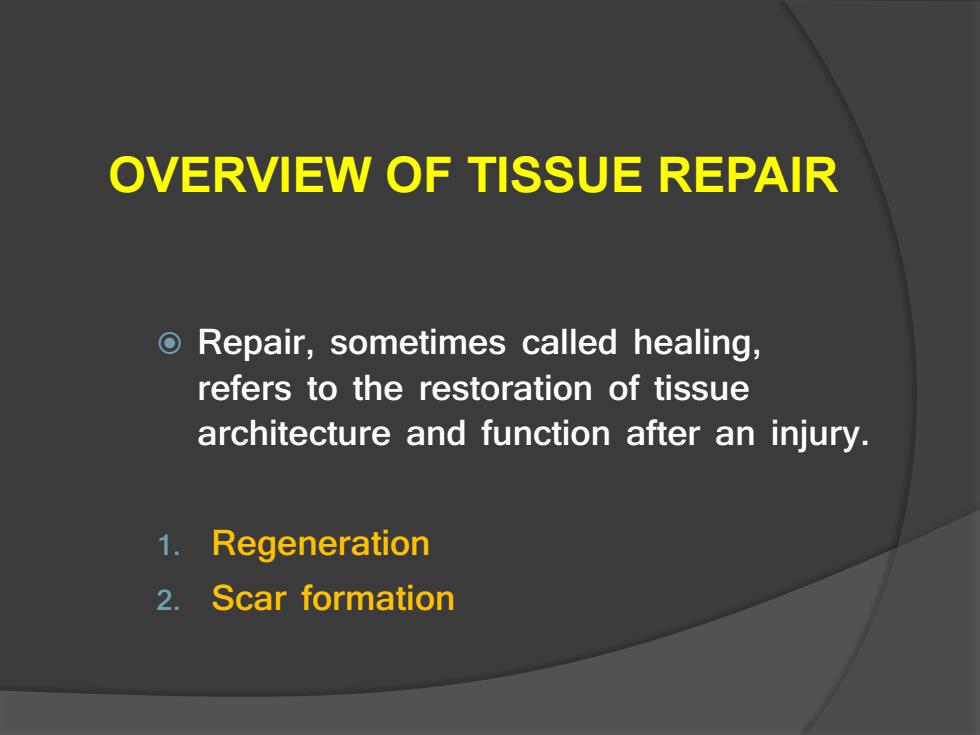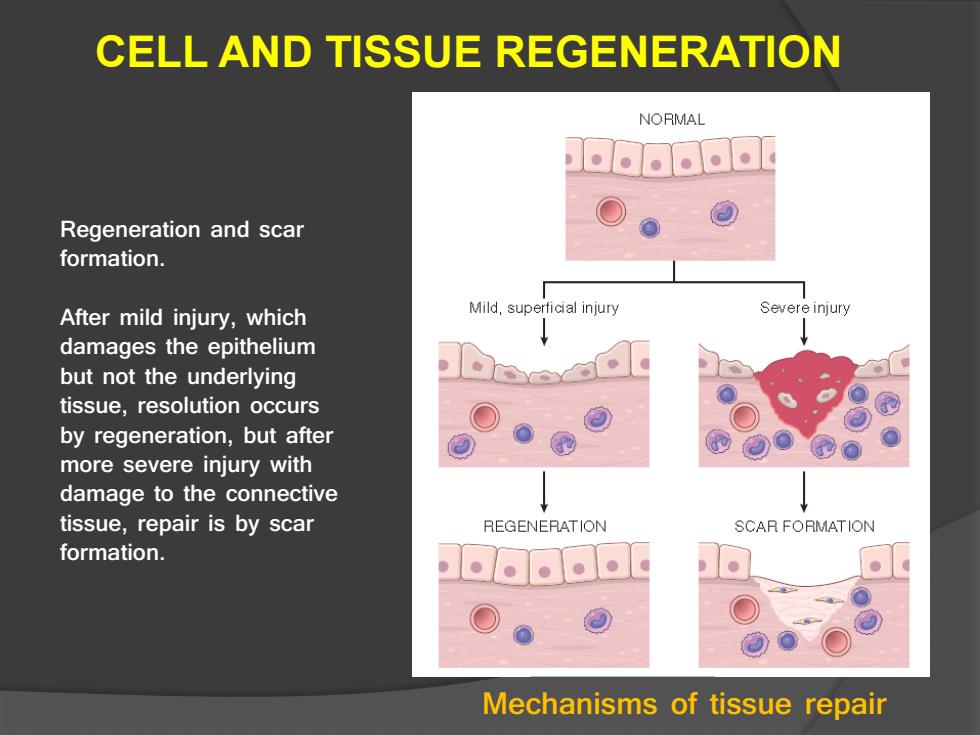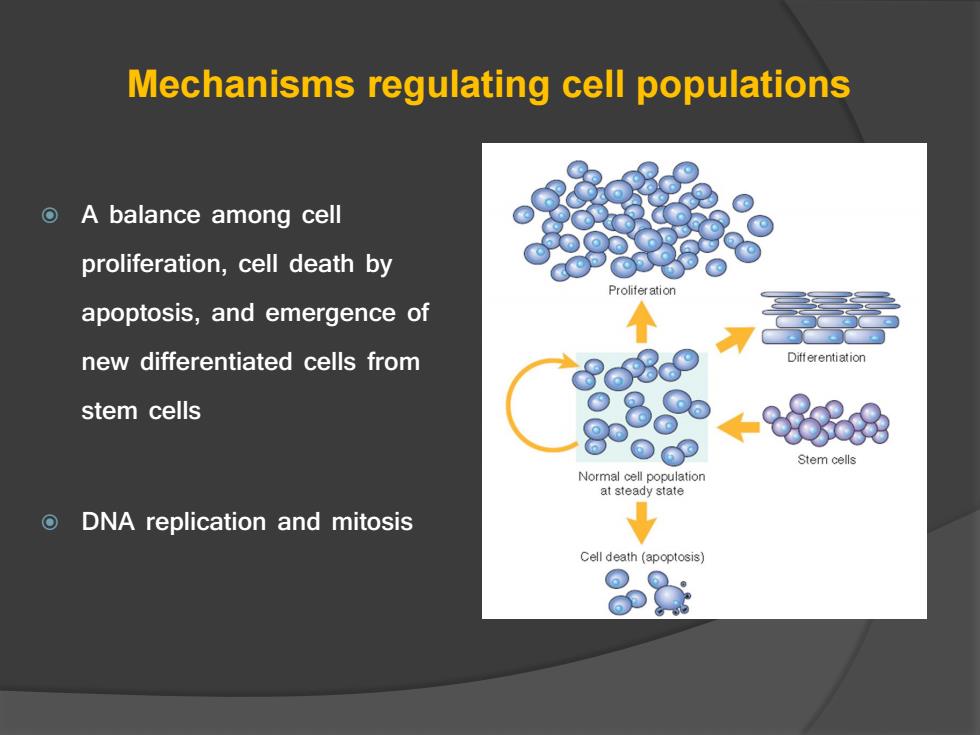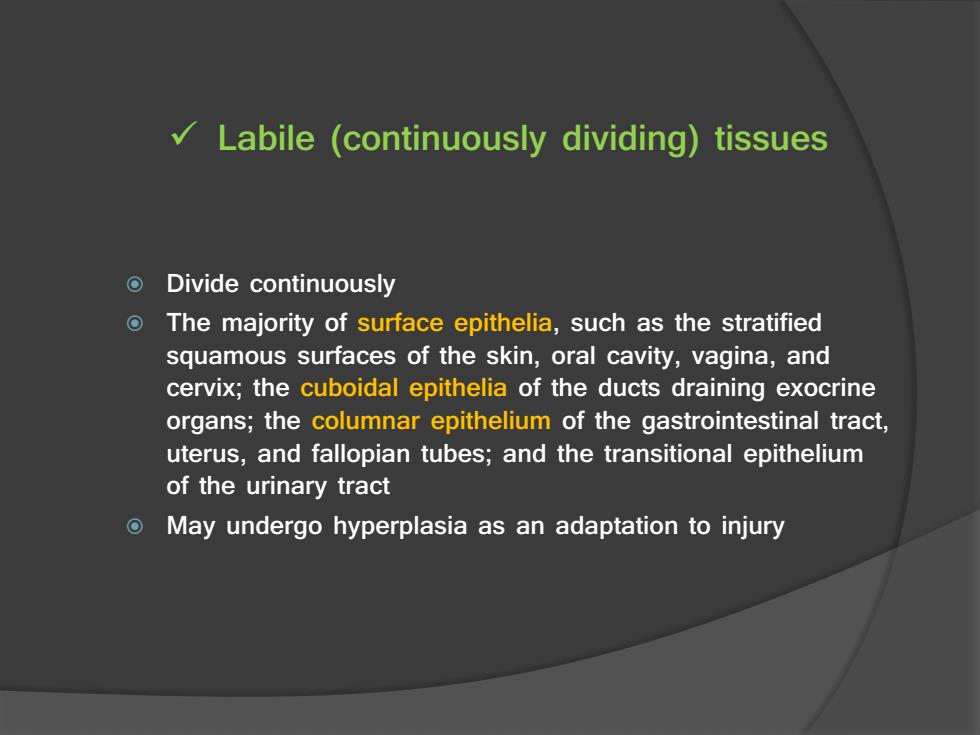
OVERVIEW OF TISSUE REPAIR Repair,sometimes called healing, refers to the restoration of tissue architecture and function after an injury. 1.Regeneration 2.Scar formation
OVERVIEW OF TISSUE REPAIR Repair, sometimes called healing, refers to the restoration of tissue architecture and function after an injury. 1. Regeneration 2. Scar formation

CELL AND TISSUE REGENERATION NORMAL Regeneration and scar formation. After mild injury,which Mild,superficial injury Severe injury damages the epithelium but not the underlying tissue,resolution occurs by regeneration,but after more severe injury with damage to the connective tissue,repair is by scar REGENERATION SCAR FORMATION formation. 。。●g Mechanisms of tissue repair
Regeneration and scar formation. After mild injury, which damages the epithelium but not the underlying tissue, resolution occurs by regeneration, but after more severe injury with damage to the connective tissue, repair is by scar formation. Mechanisms of tissue repair CELL AND TISSUE REGENERATION

Mechanisms regulating cell populations A balance among cell proliferation,cell death by Prolifer ation apoptosis,and emergence of new differentiated cells from Differentiation stem cells 8 ← od Stem cells Normal cell population at steady state DNA replication and mitosis Cell death (apoptosis)
Mechanisms regulating cell populations A balance among cell proliferation, cell death by apoptosis, and emergence of new differentiated cells from stem cells DNA replication and mitosis

Proliferative Capacities of Tissues Labile (continuously dividing)tissues o Stable tissues O Permanent tissues
Proliferative Capacities of Tissues Labile (continuously dividing) tissues Stable tissues Permanent tissues

Labile (continuously dividing)tissues o Divide continuously o The majority of surface epithelia,such as the stratified squamous surfaces of the skin,oral cavity,vagina,and cervix;the cuboidal epithelia of the ducts draining exocrine organs;the columnar epithelium of the gastrointestinal tract, uterus,and fallopian tubes;and the transitional epithelium of the urinary tract May undergo hyperplasia as an adaptation to injury
Labile (continuously dividing) tissues Divide continuously The majority of surface epithelia, such as the stratified squamous surfaces of the skin, oral cavity, vagina, and cervix; the cuboidal epithelia of the ducts draining exocrine organs; the columnar epithelium of the gastrointestinal tract, uterus, and fallopian tubes; and the transitional epithelium of the urinary tract May undergo hyperplasia as an adaptation to injury